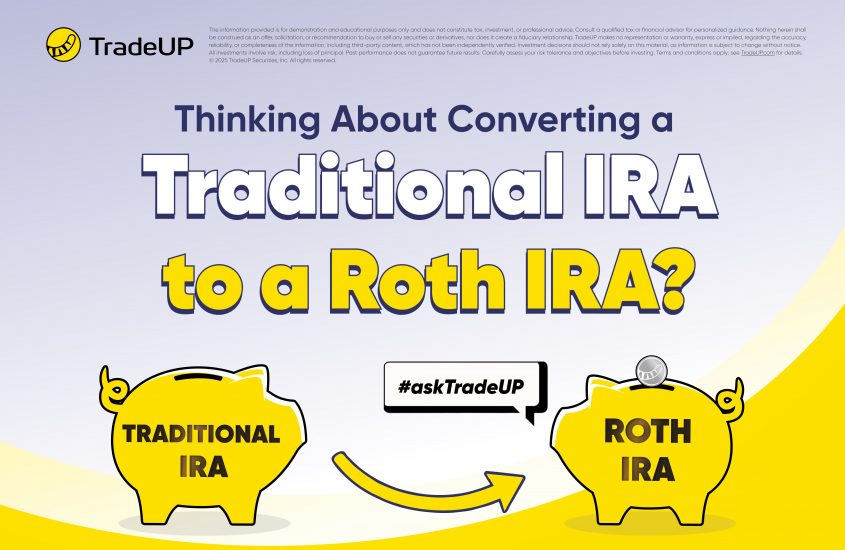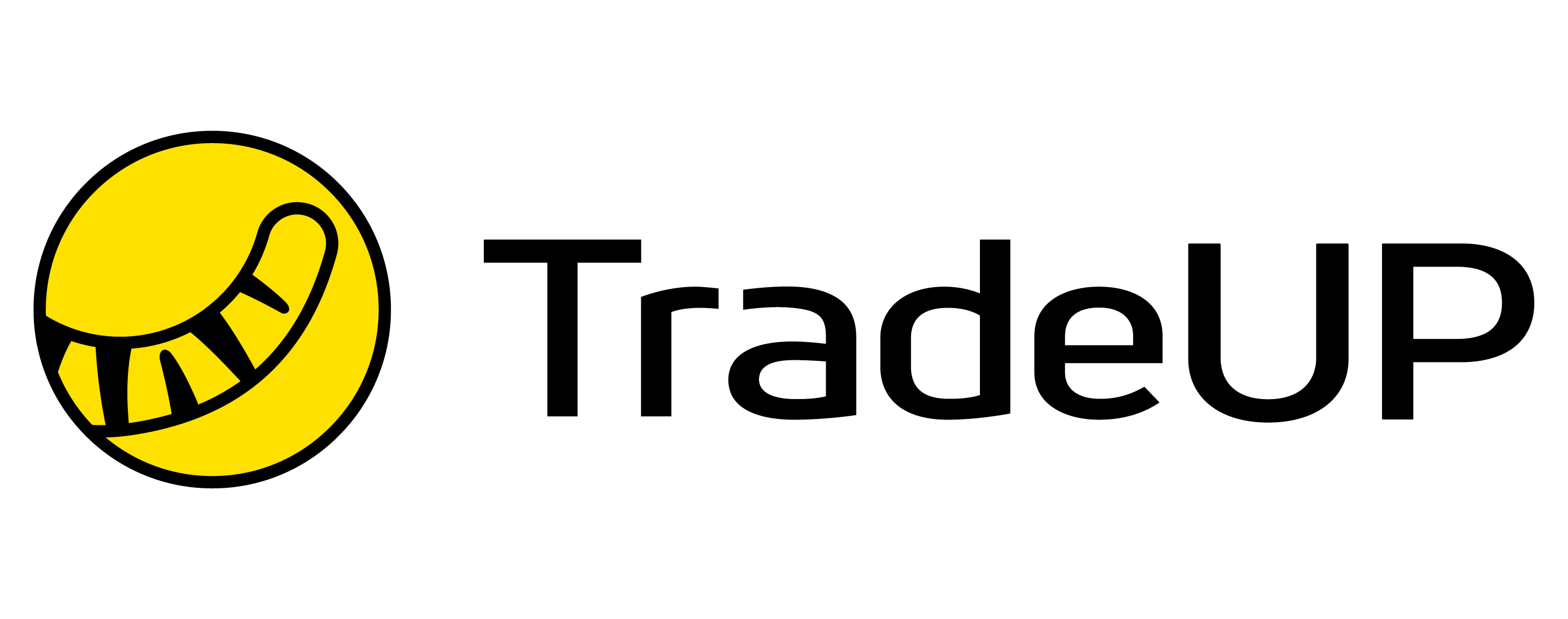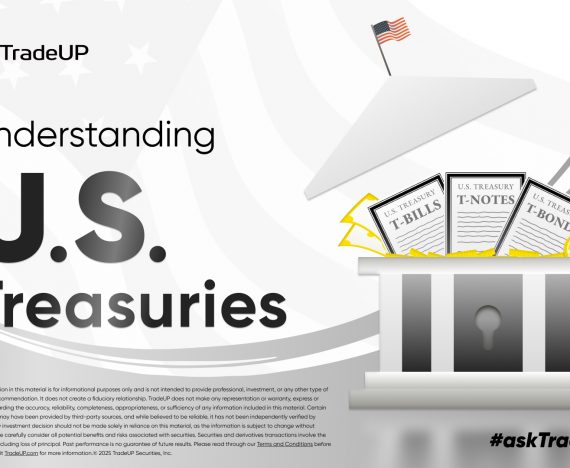Thinking About Converting a Traditional IRA to a Roth IRA? Here’s What to Know

A Roth IRA conversion lets you move retirement savings from a Traditional IRA into a Roth, giving you the potential for tax-free income in retirement. It’s a move that can support long-term planning, but it comes with rules that are important to understand before you begin.
A TradeUP, we believe in helping investors make well-informed decisions. Here’s a breakdown of key points to consider if you’re exploring a conversion.
Understand the Tax Impact
When you convert Traditional IRA funds to a Roth IRA, the amount you convert is typically counted as taxable income for that year. For instance, if you convert $50,000, that amount will be added to your total income for tax purposes.
Many investors choose to pay taxes from a non-retirement account to keep their full IRA balance growing for the future. Planning ahead for the tax bill can make the process smoother and help you avoid dipping into your retirement savings.
Know the Five-Year Rule
Once you convert funds to a Roth IRA, there’s a five-year waiting period before you can withdraw that money without penalties unless you’re over age 59½. This rule applies to each conversion you make, so timing matters. If you plan to use the funds in the near future, you may want to reconsider. Otherwise, giving the account time to grow tax-free can be a solid long-term move.
Be Aware of the Pro-Rata Rule
If your Traditional IRA includes both pre-tax and after-tax contributions, conversions can get more complex. The IRS uses a “pro-rata” formula to calculate how much of your conversion is taxable. You can’t simply convert the after-tax portion alone—it’s all treated proportionally.
This means it’s important to know the full breakdown of your IRA contributions before you make any decisions. A little preparation here can help avoid surprises at tax time.
Is Roth Conversion Right for You?
Conversions often make the most sense for investors who expect to be in a higher tax bracket down the road—or who want to avoid required minimum distributions (RMDs), which apply to Traditional IRAs but not Roth IRAs.
A Roth IRA can also be a useful tool for estate planning, as qualified withdrawals are tax-free for heirs. Still, it’s not the right choice for everyone, and timing, income level, and tax strategy all play a role.
Final Thoughts
A Roth conversion is a personal financial decision that depends on your income, goals, and long-term strategy. Understanding the rules—like the tax impact, five-year rule, and pro-rata treatment is essential to avoid unexpected costs.
TradeUP offers a platform to open and manage your retirement accounts, but we always recommend consulting with a qualified tax advisor before making any decisions involving taxes or long-term savings.
Explore your IRA options on TradeUP and take the next step toward building your financial future.
The information provided is for demonstration and educational purposes only and does not constitute tax, investment, or professional advice. Consult a qualified tax or financial advisor for personalized guidance. Nothing herein shall be construed as an offer, solicitation, or recommendation to buy or sell any securities or derivatives, nor does it create a fiduciary relationship. TradeUP makes no representation or warranty, express or implied, regarding the accuracy, reliability, or completeness of the information, including third-party content, which has not been independently verified. Investment decisions should not rely solely on this material, as information is subject to change without notice. All investments involve risk, including loss of principal. Past performance does not guarantee future results. Carefully assess your risk tolerance and objectives before investing. Terms and conditions apply; see TradeUP.com for details. © 2025 TradeUP Securities, Inc. All rights reserved.






Comments are closed.